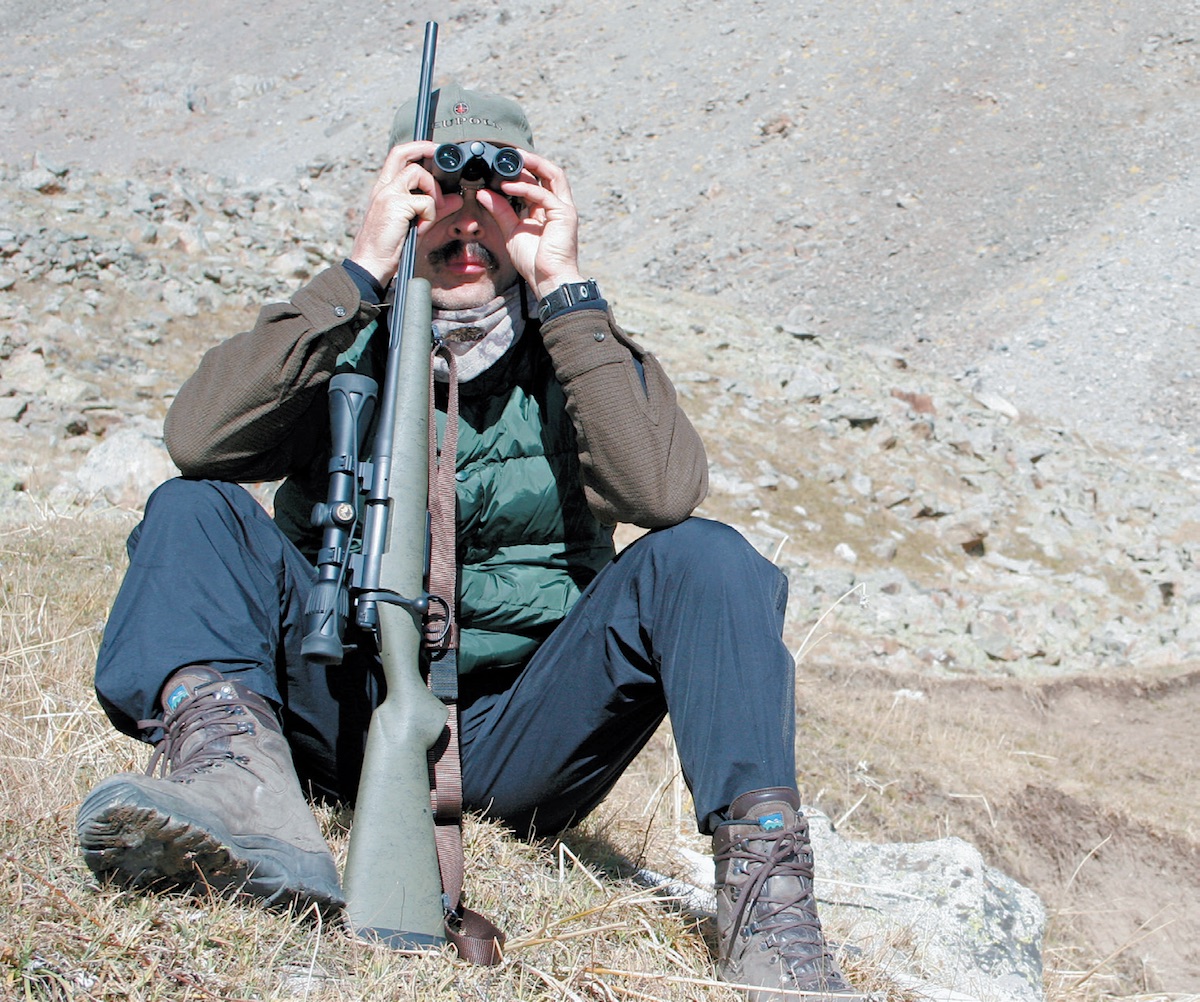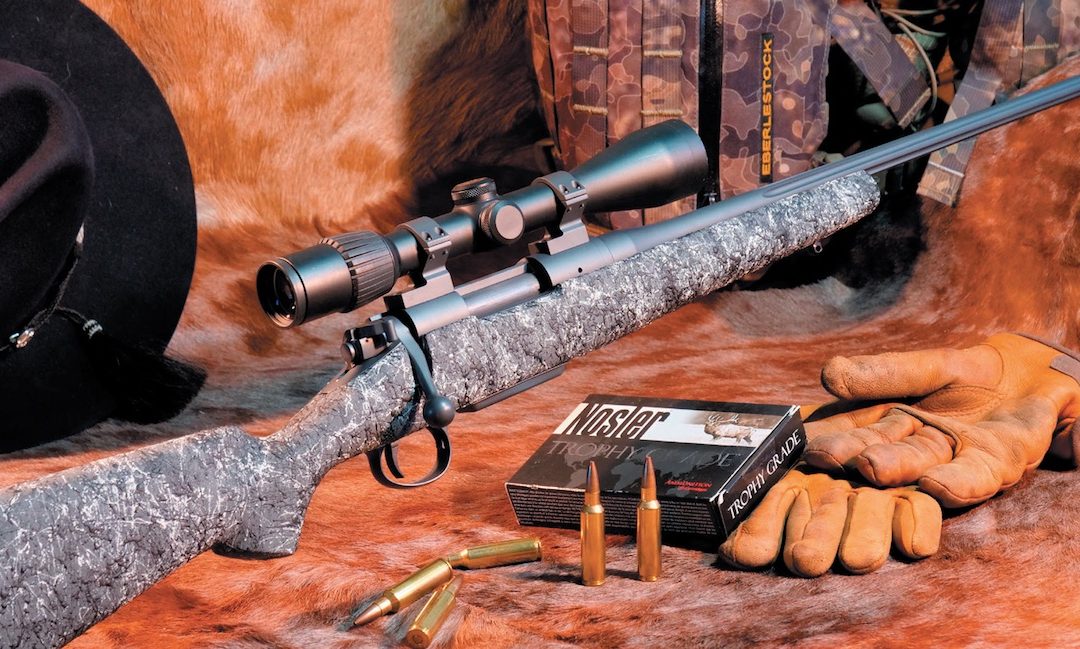With its sensibly low-key, green stock, my H-S bolt-action rifle was similarly easy to disregard. After our initial romance back in 2005, it stood quietly near the back of the gun vault, all but hidden behind the glare of newer rifles with fancy walnut stocks, the latest Kevlar/carbon/ fiberglass. It was overshadowed by big, elaborate scopes atop long, heavy barrels and even some Picatinny rails. The times they were a-changing and the old H-S Precision was not.
Shame on me for ignoring the old girl. She’d started off sexy and new, a light, handy, easy-carrying backcountry .270 WSM that proved herself quickly. Elk. Roe deer. Mule deer. Mid-Asian ibex. Maral. At just a bit over six pounds (seven scoped and field ready), this H-S carried like a daydream, cycled cartridges smoothly and sent bullets downrange precisely, three into less than a minute of angle if I did my part.
I was not alone in my appreciation of this workhorse. Friends past middle age, no longer on fresh legs, asked to borrow her for mountain elk and deer hunts amid Idaho’s notoriously steep terrain. They don’t call it Hell’s Canyon as a joke. I haven’t an exact count as to how many friends benefitted from the H-S rifle, but I recall one grandfather and his oldest son, a father and his two teen daughters and an old high school buddy who’d tired of lugging his old Ruger heavyweight.

Spomer on an ibex hunt in Kyrgyzstan with his original H-S Precision in .270 WSM.
No one returned unhappy from their excursions with the H-S rifle, not even those who never got a shot. Those who did shoot usually came home bloodied. Many popped up season after season, specifically requesting “that light, deadly, green .270 WSM.”
If you’re familiar with the phrase “drive it like a rental,” you’ll appreciate the kind of casual abuse the old rifle endured. No matter how considerate and cautious one initially is with a borrowed rifle, heat, cold, rain, snow, high winds and towering peaks have a way of distracting the most conscientious. Based on its ever more worn bluing, scratched stock and chipped grip, that poor H-S rifle was being slung, pushed, passed, dropped and dragged over and sometimes through mud and thorns and stones. Who knows, it may have propped up a tent fly and paddled a river or two. But it never failed to deliver the fatal blow when asked.
Perhaps the oddest part of this hunting rig was the scope. I’d initially mounted a 3-10x40mm Weaver Grand Slam Rocky Mountain Elk Foundation special edition. I wanted to test the durability and effectiveness of a relatively inexpensive, general purpose hunting scope. I figured to remove it after the first hunt, but somehow never got around to it. And never needed to. It’s still there, still sharp and clear, still in Talley one-piece, 1.5-ounce rings, still directing bullets into tiny groups. Except now the bullets are .308-inch in diameter.
No, I’m not forcing 30-caliber bullets down a 27-caliber bore. Like that retiring high school girl, the H-S SPL left town for a major makeover and came back as a .300 WSM in an exciting new color that gives it a lively new attitude. That’s one of the benefits of a hand-laid Kevlar, fiberglass and carbon fiber stock, something H-S has specialized in for more than 30 years. You can easily change the looks with a new finish. But the handling can improve, too. The three dimensional, white-and-black splatter paint over the gunmetal gray base adds not only style, but grip. And not just where traditional checkering would, but all over. Pick this rifle up, hot or cold, wet or dry, and you’ll feel the texture that helps you hold on. Unlike some modern, sand-paint finishes, the edges are not so sharp that they cut or rasp your hands.
Something you don’t see in the restored stock is its embedded aluminum blocks. An action-length aluminum block provides a broad, perfectly curved platform on which the Pro Series 2000 push-feed action’s receiver rings bed, pulled tightly and consistently via two bedding screws. This leaves the thin, fluted barrel free-floating. Throw in the bolt with its two perfectly aligned and squared locking lugs, a chamber I assume must be match grade, and you end up with a trim, responsive, perfectly balanced, seven-pound rifle capable of shoving 180-grain Nosler Ballistic Tips 2,880 feet-per-second down its 22-inch barrel consistently enough to leave three of them touching in a 0.24-inch cluster at 100 yards.
That’s right. A quarter-inch group from a seven-pound rifle with a thin, ultralight barrel just 22 inches long. An elk’s worst nightmare. A hunter’s best dream. Come true.
I’m scheduling a few fall dates with the hot “new” number standing near the front of my safe.




